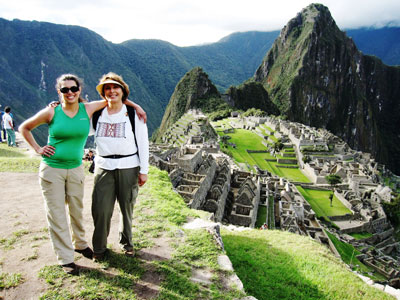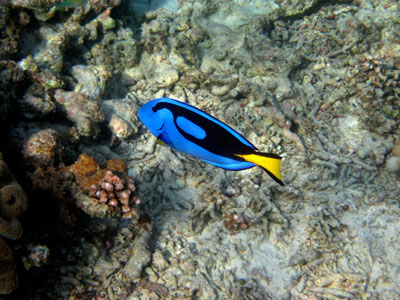A digital camera you can recommend — Compact Cameras
We asked for your recommendation of a good, pocket-sized, point-and-shoot digital camera that has a viewfinder. But we also asked you to name the digital camera — of any type — that you prefer to use while on a trip. In last month’s issue we printed subscribers’ comments on “ultracompact” cameras (about the size of a deck of cards and weighing less than six ounces without batteries). This month we’re printing responses on “compact” cameras (a step up in size but, generally, small enough to fit into a jacket or pants pocket and weighing less than 10 ounces without batteries). Reviews of larger cameras will follow.
For each camera reviewed, we’ve given the brand and model number and the year it was introduced, followed by the megapixels (mp) that it is capable of producing (more megapixels means pictures higher in resolution, resulting in sharper photos from which bigger enlargements can be made) and the degree of optical zoom and digital zoom it’s capable of (for example, the optical zoom/digital zoom could be “5x/4x”).
(Note: optical zoom uses the optics, or lenses, to virtually “bring a subject closer,” as does a telescope. With digital zoom, the camera electronically enlarges the area you “zoom” in on and crops the rest of the image [this enlarging can, instead, be done later with image-editing software]. The image quality derived from optical zoom will be better than that from digital zoom.)
Also listed are each camera’s dimensions and weight, the size of the liquid crystal display (LCD) screen that it has plus the type of viewfinder it has, if any. (Particularly when composing close-ups, the LCD screen may give a better indication of how the final image will be framed than will an offset “optical viewfinder,” due to parallax.)
If the subscriber mentioned the price, we’ve included it. If no price was quoted, we show the top price at which it was listed at Amazon.com. (While older-model cameras may be difficult to find in “brick-and-mortar” stores, they are widely available online at sites such as Amazon.com, Bestbuy.com and eBay.)
Note: all of these cameras can also shoot video.
Canon PowerShot A1200 — 2011, 12.1 mp, 4x/4x zoom, 3.86"x2.48"x1.22", 6.53 oz., LCD 2.7", optical viewfinder
• For my trip to Cusco and Machu Picchu, Peru, in October ’11, I purchased a Canon Powershot A1200. After much research, this was the only low-price ($109) point-and-shoot digital camera I found that had a viewfinder. I find it difficult to see on the LCD monitors in bright light, and I like to frame pictures looking through the viewfinder.
The camera takes good pictures. The quality of the color when you play back pictures on the LCD monitor is poor, but the actual color quality of the prints is good (after using the enhancement feature in the software for downloading pictures to the computer).
I especially like the fact that the camera uses AA batteries instead of a rechargeable battery. I don’t have to worry about carrying a charger and adapters and recharging overnight. Instead, I just carry an extra set of the small AA batteries with me, just in case.
I used AA lithium batteries for the trip (because they last longer), and I didn’t have to replace the batteries until I returned home and had taken over 400 pictures. — HELEN W. MELMAN, Los Angeles, CA
• Pluses of this little camera — it’s lightweight, it has a 28mm 4x zoom lens and a viewfinder, its resolution is 12.1 megapixels and the price is good.
Minus — new small cameras no longer come with complete printed user guides. If you want to have all of the information related to the camera’s operation, it’s necessary to print out the guide from the included CD. — ROSEMARY McDANIEL, Trenton, FL
• For quality, my preference is an SLR (single-lens reflex camera), but, after nearly 40 years of heavy camera bags, I sometimes use the Canon A1200 because it’s small and light.
The picture quality is quite good, and the choice of options is typical for a camera in this price range; it generally sells for less than $100.
The only drawback I’ve found is that the viewfinder is a bit small and takes getting used to. Still, if an optical viewfinder is as important to you as it is to me, the A1200 is worth looking into.
When a camera is held away from the body, as is done with most point-and-shoot digital cameras that have only an LCD screen, there may be issues with steadiness as the photographer ages. I teach seniors photography and have noticed that there is often a problem with sharpness in pictures due to camera movement. An optical viewfinder allows a lot more control since the camera is held tight to the eye. — BOB CROSBY, Santa Rosa, CA
• I share others’ frustrations in trying to use the screen on a small digital camera, especially in bright light. When I came home from a trip in May ’10, I found I had taken many “mystery photos" because I couldn’t see what I was taking. I went to the Net to see if any manufacturer had starting putting viewfinders in their small cameras again. It was like looking for a needle in a haystack. However, I got lucky.
Canon came out with such a camera in spring 2011 and it’s very reasonably priced. On Amazon.com, the Canon Powershot A1200 cost $119 in black and $108 in silver. I took it on a two-week trip to Greenland and Iceland in June ’11 and was pleasantly surprised at the quality of the photos.
The viewfinder is small, but it is a viewfinder! The camera is a fairly large-sized point-and-shoot, but it should fit in a man’s shirt pocket. The 4x zoom bothers me because I’m used to 12x on my larger camera, but, for the camera’s small size, I can’t complain. The menu of things one can do with this camera is amazing, for the price. — SHIRLIANNE OLSEN, Placentia, CA
Canon PowerShot SD 990IS — 2008, 14.7 mp, 3.7x/4x zoom, 3.86"x2.44"x1.10", 7.23 oz., LCD 2.7", optical viewfinder, $400
• In my younger days I used to carry an SLR camera on my travels, but I grew tired of the weight and bulk. I also disliked identifying myself as a tourist so obviously; the majority of my travels have been to the cities of Europe. I still use the SLR with the long lenses for wildlife photography, including on an African photo safari.
For a trip to Spain and Portugal a couple of years ago, I decided to purchase a compact digital camera. I wanted one with a viewfinder, although I now find myself using the screen the majority of the time. I settled on a Canon PowerShot SD990 IS.
In 2009 it cost $399.99 at the local camera store. This is not inexpensive, but I have been very pleased with the photos taken with it. It has a minimum focal length of 28.5mm. The camera contains more specialized functions than I have had the opportunity to explore yet — or it can simply be left in auto mode. — GLENN GRAHAM, Red Bluff, CA
Canon PowerShot A720IS — 2008, 8 mp, 6x/4x zoom, 3.83"x2.69"x1.65", 7.05 oz., LCD 2.5", real-image-zoom optical viewfinder, $530
I’ve had my Canon PowerShot A720IS for about four years now, and, although it took me a while to quit griping about the loss of my film camera, I now love my digital.
The best thing about this camera is that you can also look through the viewfinder to compose your shot. I was very happy about that feature in Italy in August ’11. There were many situations when the sun was so bright, I couldn’t see anything on the LCD screen. The viewfinder saved the day!
The other thing I like is the camera uses two AA batteries and so doesn’t need to be recharged. I just take extra batteries in my carry-on (in most countries, including the US, loose lithium batteries are not allowed in checked bags on planes) and then just make sure I carry two extra each day when I’m out and about.
The battery aspect may not appeal to some, however, as it does make the camera a bit heavier and not as sleek as ones with smaller rechargeable batteries. I think I paid about $200 for the camera. — BARB HARTWELL, St. Petersburg, FL
My husband, Leroy, and I both like to take pictures, probably too many! For years, I had an Olympus 120 film camera which took great pictures, but I gave it up for a small Nikon digital that had some design flaws and didn’t have a viewfinder. In April ’08 we found the perfect pocket-sized camera: a Canon PowerShot A720IS, with a resolution of 8 megapixels, a 6x optical zoom, a screen AND the all-important viewfinder! How nice to be able to see what you’re trying to focus on in bright sunlight!
The size is good for pocket or bag but not so small as to be unsteady. We paid $215 for it, including tax, and $25.95 plus tax for a zippered case. It has been problem-free and it takes wonderful pictures.
I’ve given up on carrying a videocamera these days and take only this Canon. I’ll look for another Canon if this one ever wears out and becomes totally outdated. My husband, though, is still sold on his Nikon SLR. — MARTHA LANCE, Fullerton, CA
Canon PowerShot A590IS — 2008, 8 mp, 4x/4x zoom, 3.71"x2.55"x1.61", 6.17 oz., LCD 2.5", optical viewfinder, $180
• Canon’s Powershot A590IS, $109 when purchased in 2009, has served me well. Modes other than auto allow for creativity/preference settings for shutter, ISO, flash (off), movie shooting and display (off), etc.
Other than its small size and 4x optical zoom, the two features I like most are the viewfinder and “the hump" (where the AA batteries are). As cameras decrease in size, so do the controls. I like a little “meat" on my camera for better stability to complement the built-in IS (image stabilization).
With a viewfinder, the LCD screen can be turned off, so the batteries can have a longer life.
As an early riser, when I am abroad I leave my heavy-duty SLR in the hotel and use my easily concealed PowerShot instead. — DARRELL FEES, Des Moines, IA
• After having read reviews on digital cameras in Consumer Reports, I bought their “best buy” point-and-shoot from Best Buy in June ’08. I am very satisfied with my Canon A590IS compact camera for which I paid $164.99.
If you can find this model or its equivalent on Amazon.com, I’m sure you’ll pay less and will be satisfied with the pictures it takes. More importantly, it is one of the few compact digitals to offer a viewfinder. — RON EVANS, Corte Madera, CA
Canon PowerShot A560 — 2007, 7.1 mp, 4x/4x zoom, 3.6"x2.5"x1.7", 6.17 oz., LCD 2.5", optical viewfinder, $150
• I have problems seeing an LCD screen while in outdoor light. We currently have a Canon A560, which has the see-through viewfinder, but it is not small enough for a shirt pocket. — ROGER ROOT, Tucson, AZ
Canon PowerShot A540 — 2006, 5.9 mp, 4x/4x zoom, 3.6"x2.6"x1.9", 6.3 oz., LCD 2.5", optical viewfinder, $399
Canon PowerShot A630 — 2006, 8 mp, 4x/4x zoom, 4.3"x2.6"x1.9", 8.6 oz., LCD 2.5", optical viewfinder, $699
• We’ve used these cameras on many trips and have learned to enjoy them. They’re small and easy to use. There are no extra lenses or, of course, film to carry around, and it’s nice to be able to delete pictures you don’t want in the camera. The settings produce fine photographs for enlarging up to 11"x17".
Each has an eyepiece viewfinder. The A540, with two batteries, is lightweight and compact. Its screen uses lots of battery power and is poor in bright sunlight. The screen on the A630 is hinged and can swing out. This camera is a bit larger and heavier than the A540, but it still easily fits into a pants pocket. The A630 uses four batteries, and I find the larger battery area makes a better “handle" for holding the camera; it’s more comfortable for my hand.
Caution: with each, the viewfinder does not precisely line up with the lens, and on close-ups (of flowers, details, etc.) you need to verify that the photo taken actually captures the picture area desired.
Both cameras have many, many more features than I need. They’re all very useful to someone, but for mere travel photos on the go, sometimes it takes too long to make individual settings or I just forget to do the settings. I’ve also found that the autofocus device can be a problem for fast shooting or with moving objects.
Both cameras have been very durable. I have looked at the newer, larger SLR digitals, but they are too large. I’m spoiled by the size and quality of my PowerShot cameras. Plus I can take photos and not be obtrusive or overbearing or interrupting to the subject matter, making me more respectful of the foreign cultures and people’s privacy. — MILTON MARTIN, Hopewell, VA
Canon PowerShot A80 — 2003, 4 mp, 3x/3.6x zoom, 4.1"x2.5"x1.4", 8.8 oz., LCD 1.5", optical viewfinder, $50
Canon PowerShot D10 underwater camera — 2009, 12.1 mp, 3x/4x zoom, 4.08"x2.63"x1.92", 6.7 oz., LCD 2.5", no optical viewfinder, $260
• After schlepping an SLR camera with multiple lenses for many years when traveling, I “bit the bullet” in early 2004 and purchased my first digital point-and-shoot, a Canon PowerShot A80, then used it as my only camera on a trip to India.
The convenience of a small camera and the ability to be less conspicuous when shooting images were my reward. I was happy with my decision to leave my large camera at home.
My wife and I have traveled for many years to many places in the world. A trip we made to Indonesia in winter 2010, a month-long cruise on the small ship Clipper Odyssey (Zegrahm Expeditions, Seattle, WA; 800/628-8747), was one of the best!
It was awesome, and we experienced the best snorkeling ever at several islands and reefs in the Ceram and Halmahera seas. The spectacular colors and beauty of the coral and other sea life in the unusually clear water made it a photographer’s paradise. Being able to capture excellent underwater images with my Canon PowerShot D10 made the experience even more satisfying.
Fitting comfortably in the palm of the hand, this camera has a built-in flash, is waterproof to 33 feet, works in temperatures from 14°F to 104°F and is shockproof up to four feet. In addition to being functional in and around water, the PowerShot D10 has features (e.g., ISO range 80 to 1600 and movie modes, to name a couple) that make it an excellent camera for many situations.
I am extremely impressed with these two point-and-shoot cameras and find them excellent travel companions. — PAUL WICKLUND, Wayzata, MN
Leica D-LUX 4 — 2009, 10.1 mp, 2.5x/4x zoom, 4.28"x2.34"x1.7", 8.0 oz., LCD 3.0", $800; viewfinder sold separately, $260
• After many years of trying other options, the Leica D-LUX 4 is, by far, the best travel camera I’ve found. Gone are the days of lugging a heavy camera bag and/or a bulky, heavy camera. This camera has many of the advantages of a digital SLR but without the size and weight.
It fits easily in my travel vest pocket; it’s great for available-light photography, and the 10.1 mp maximum image quality seems more than adequate for travel photography. It even does excellent macrophotography.
The major limitations I’ve found — it does not have much of a telephoto capability (a 60mm reach, maximum) and it’s on the pricey side.
All in all, in terms of its size/weight convenience, quality of construction and producing great images, I find the D-LUX 4 to be worth every penny. — BOB LATA, Paso Robles, CA
Panasonic Lumix DMC ZS5 — 2010, 12.1 mp, 12x/4x zoom, 4.07"x2.35"x1.28" 6.7 oz., LCD 2.5", no viewfinder
• I researched all of the reviews and spent a lot of time with a very knowledgeable person at Best Buy testing all of the cameras before ending up buying the Panasonic Lumix DMC-ZS5, on sale for $250.
It has all the features for taking better pictures and video than my ultracompact Nikon Coolpix S210, although at 7.4 ounces (with batteries) and being about an inch longer and a half inch thicker than the Nikon, it’s hard to put into my shirt pocket. The Lumix’s screen is larger than the Nikon’s.
For good pictures, here is what I found you need in a camera for your travels, based on my experience with these two models:
* You need at least a 12 mp camera. With anything above that, I could not tell the difference in the results.
* Look for a camera that handles low-light shooting, such as in the case of heavy clouds.
* If you take a lot of pictures, take an extra battery with you plus your battery charger, then swap out when you need to during the day and charge that night for the next day.
* Get the largest-capacity memory card your camera can handle, which for the Lumix is a 32G. And have a backup memory card in case you fill up the other.
* If you take a laptop, download all of your pictures daily for backup, just in case something happens to your camera.
“For photos of which I know I won’t make printed enlargements, I shoot at around 3 mp to 5 mp per photo. Shooting higher will fill up the memory card quicker.”
* Lastly, get a camera with an optical image stabilizer. If you are moving, this option will straighten up your picture. We took pictures out of a moving train and you can’t tell we were moving at all. — STEVE JONES, Valencia, CA
Sony Cybershot DSC-W1 — 2004, 5 mp, 3x/2x zoom, 3.6"x2.4"x1.2", 6.7 oz., LCD 2.5", optical viewfinder, $399
• My first digital camera was a Sony W1, and it was impressive as I captured hundreds of photos throughout France in 2005.
It was a relief not to be carting 40 rolls of film in lead-lined bags through airport x-ray machines. And no more lugging extra lenses to take pictures of lions in Africa! I never looked back. — CARL HAAG, Princeton, NJ




